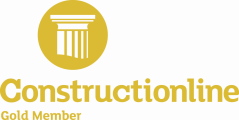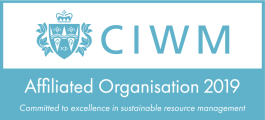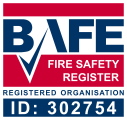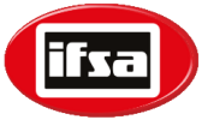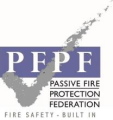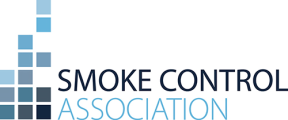Expert advice and unique insight….
at every RIBA stage
One of the unique benefits of Kiwa Fire Safety Compliance is the breadth of experience we can provide to assist our clients in the fire safety design, construction, management and operation of their facilities throughout the lifespan of a facility.
Watch this video or click through the interactive diagram below to learn more
The RIBA Stages together form the RIBA Plan of Works For more information go to www.ribaplanofwork.com

Stage 0 - Strategic Definition
- Identifying a Business Case and Strategic Brief and other core project requirements.
- A project is strategically appraised and defined before a detailed brief is created.
- This is particularly relevant in the context of sustainability, when a refurbishment or extension, or indeed a rationalised space plan, may be more appropriate than a new building.
Stage 0
Strategic Definition
How we can help
- Appraisal by Fire Engineering team.
- Initial outline and strategic advice for a coherent fire strategy and how that can help to influence a project’s direction and maximise the developments ROI.
- Convey a clear understanding and overview of the impact of fire related issues on design ambitions for the project.
Stage 1 - Preparation & Brief
- Tasks that relate to carrying out preparation activities and briefing in tandem.
- Develop project objectives, budgets, initial project briefs. Undertake feasibility studies and review of site information.
Stage 1
Preparation & Brief
How we can help
- Pre-planning advice (such as influence on surrounding buildings) & Fire Safety review with reduced risk of significant site changes due to fire related aspects at later stages.
Stage 2 - Concept Design
- Prepare concept design, including outline proposals for structural design, building services systems, outline specifications and preliminary cost information; along with relevant project strategies in accordance with the design programme.
- Agree alterations to brief and issue a final project brief.
Stage 2
Concept Design
How we can help
- Initial fire strategy created with early-stage Fire Safety principles outlined.
- Identification of value-add scenarios and design impacts.
- Focus on master planning and massing issues such as: site access for rescue services, rationalisation for the number and location of staircores, fire water supplies, maximising NLA and numbers of units.
Stage 3 - Developed Design
- Prepare a developed design, including coordinated and updated proposals for structural design, building services systems, outline specifications, costs and project strategies in accordance with the design programme.
Stage 3
Developed Design
How we can help
- First draft of detailed fire strategy including evacuation routes, fire-fighting provisions and fire safety systems (compartmentalisation, sprinklers, alarms), to optimising CapEx, OpEx against ongoing servicing and maintenance lifetime costs and achieve best value over stated project lifetime.
- Carry out fire engineering analysis, such as egress, computational modelling (CFD) and radiation analysis. Liaison with statutory authorities to obtain approvals.
- Preparation of detailed drawings of bespoke doorsets and other fire resisting construction, plus 3rd party peer review.
Stage 4 - Technical Design
- Technical Design comprises the residual technical work of the core design team members.
- It is prepared in accordance with the Design Responsibility Matrix and project strategies to include all architectural, structural and building services information, specialist subcontractor design and specifications, in accordance with Design Programme.
- This stage also includes and recognises the importance of design work undertaken by specialist subcontractors and/or suppliers employed by the contractor.
Stage 4
Technical Design
How we can help
- Further development of the Fire Safety Strategy and detailed design support for passive and active fire safety systems.
- Review or design of bespoke stopping details where required and advise on cost optimising, performance and selection of systems.
- Assist client design team in developing tender documentation, packages and specifications and lend expert opinion in review of tenders to confirm content and competence of contractors.
Stage 5 - Construction
- Offsite manufacturing and onsite construction in accordance with the construction programme and resolution of any design queries from site as they arise.
Stage 5
Construction
How we can help
- Conduct inspections at key stages (external cavity barriers, service penetrations, fire doors). Periodic inspection of quality workmanship and standards against fire strategy, provides confidence in the sign-off of any work carried out.
- Monitor and supervise Fire Safety throughout design development and construction to ensure construction complies with fire strategy intent.
- Independent expert, site surveys, inspections and commissioning of Fire Safety Systems and products, such as penetration sealing and fire doors.
- Onsite visits for ongoing Fire risk assessments of construction site and on hand expert advice to troubleshoot problems that arise; as well as certification of installers, products, systems and materials to ensure competency.
Stage 6 - Handover & Close out
- Handover of building and conclusion of building contract.
Stage 6
Handover & Close out
How we can help
- Pre-handover fire risk assessments and training for fire risk assessors.
- Preparation of fire safety management strategies and fire safety plans for future occupants.
- Site surveys and inspections of fire systems and products such as fire alarms, sprinklers, fire compartmentation e.g. penetration sealing and fire doors.
- Reduction of delays in project sign-off, reducing risk of missing final deadlines. Timely compilation of fire safety documentation for future compliance and evidence.
Stage 7 - In Use
- Post-occupancy evaluation and review of project performance as well as new duties that can be undertaken during the In-Use period of a building.
Stage 7
In Use
How we can help
- Annual fire risk assessments and active system inspections to reduce risk of inadequate life safety standards.
- Review of management plans to ensure they remain applicable and robust.

